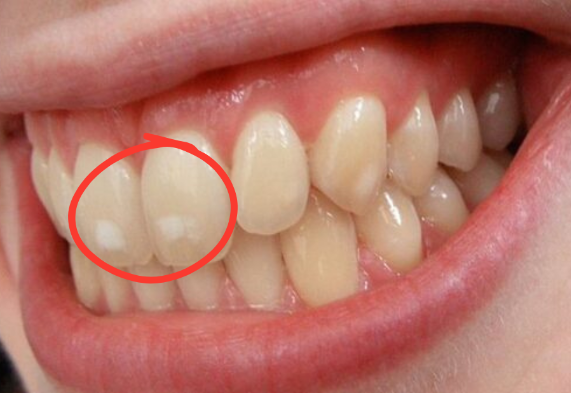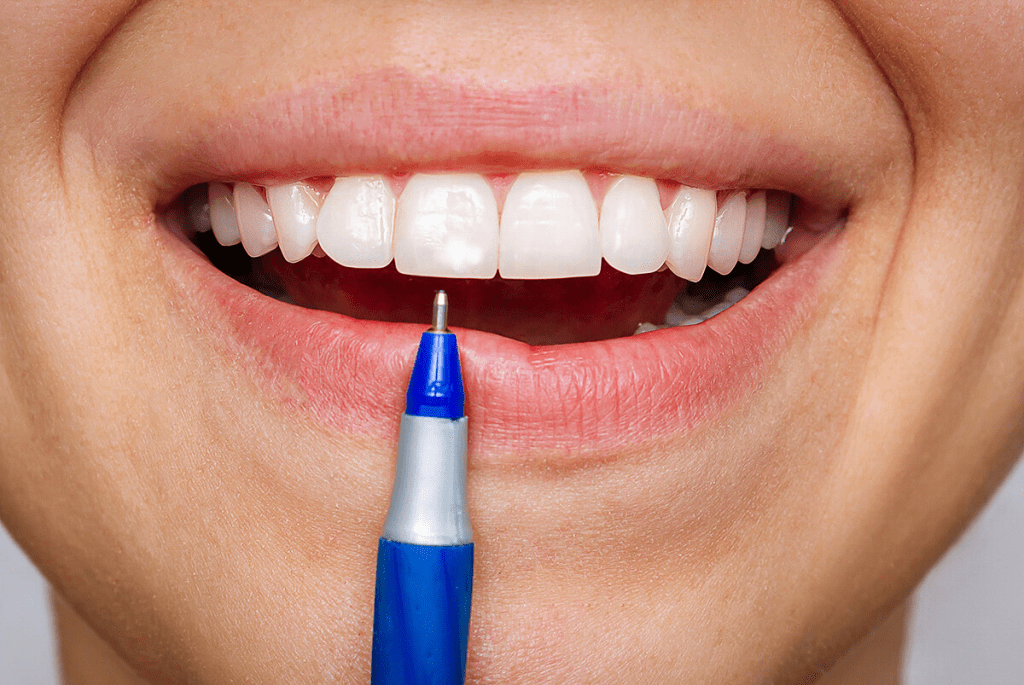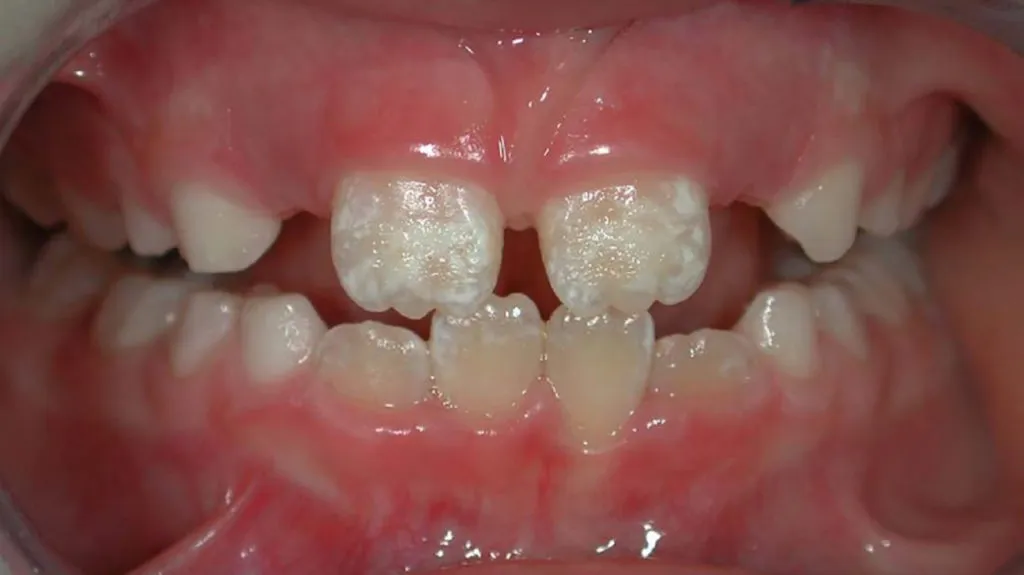Tooth decay can often sneak up on you with subtle signs, one of the first being white spots on your teeth. These chalky white marks are more than just a cosmetic issue—they can signal the onset of cavities and enamel damage. Acting quickly when you notice these spots can help you avoid more severe problems down the road. In this article, we’ll explore why these spots appear, what they mean for your dental health, and what you should do if you spot them on your teeth.
What Causes White Spots on Teeth?

White spots on your teeth can appear for several reasons, many of which relate to the early stages of tooth decay. They can also be a sign of mineral loss in your enamel, which can weaken your teeth and make them more vulnerable to cavities.
1. Demineralization and Early Decay
One of the most common causes of white spots is demineralization. This occurs when plaque—a sticky, bacteria-filled film—builds up on your teeth and produces acids that erode the enamel. This process leaches essential minerals from the surface, leaving white patches.
2. Poor Oral Hygiene
When you don’t brush and floss regularly, plaque can build up, especially around your gumline and in hard-to-reach areas. The acids in plaque can lead to demineralization and, ultimately, visible white spots. Regular brushing and flossing can prevent this buildup, keeping your teeth healthy and strong.
3. Too Much Fluoride
While fluoride is crucial for strong teeth, too much of it—especially in childhood—can lead to a condition known as fluorosis. Fluorosis causes white or brown spots on the enamel. It’s most common in children who consume large amounts of fluoride through drinking water, toothpaste, and supplements.
4. Nutritional Deficiencies
Deficiencies in essential vitamins and minerals, particularly calcium and vitamin D, can impact enamel health. Lack of these nutrients can make your teeth more susceptible to decay, which can initially manifest as white spots on the surface of the teeth.
How to Identify Early Signs of Tooth Decay
White spots are one of the first signs of tooth decay, but there are other symptoms to watch for that may signal developing issues with your teeth.
1. Discoloration: White, Brown, or Black Spots
Initially, tooth decay may show as a chalky white spot. As the decay progresses, the spot may turn brown or black, indicating a more severe level of damage to the enamel.
2. Sensitivity
If you’ve noticed your teeth becoming more sensitive, especially when consuming hot, cold, or sweet foods, it may be a sign of enamel erosion. As the enamel wears away, the nerves inside the tooth become more exposed, leading to increased sensitivity.
3. Rough Surfaces or Small Holes
Run your tongue along your teeth. Do you feel any rough spots or tiny holes? These can be signs that tooth decay is beginning to eat away at your enamel. The presence of small pits or a rough texture on your teeth is a clear indication that it’s time to visit the dentist.
Why You Shouldn’t Ignore White Spots on Your Teeth

White spots on your teeth might seem harmless at first, but ignoring them could lead to significant dental problems. Here’s why taking immediate action is essential:
1. Prevention of Cavities
Cavities don’t form overnight. The early stages of decay start with demineralization, which appears as white spots. Catching this stage early allows you to remineralize your enamel and prevent cavities from forming in the first place.
2. Avoiding Serious Dental Procedures
Once a cavity forms, it requires professional intervention, like fillings or even root canals if left untreated. Addressing white spots early with preventative care can save you from needing more invasive dental treatments.
3. Maintaining a Bright Smile
White spots can detract from the uniform color of your teeth, impacting your smile. Treating them early not only protects your dental health but also helps maintain the aesthetics of your teeth.
How to Treat and Prevent White Spots on Teeth

There are several ways to address white spots on your teeth and prevent them from turning into bigger dental issues.
1. Use Fluoride Treatments Wisely
While fluoride is important for preventing decay, using it in moderation is key. Talk to your dentist about using fluoride treatments, mouth rinses, or varnishes that can strengthen your enamel without causing fluorosis.
2. Remineralization Treatments
Remineralization is a process that restores essential minerals to your teeth. Specialized toothpaste and mouth rinses contain calcium, phosphate, and fluoride, which help repair enamel and reduce the appearance of white spots. Your dentist can recommend the best options for your needs.
3. Adopt a Strong Oral Hygiene Routine
Brush your teeth at least twice a day with a fluoride toothpaste, and don’t forget to floss daily. Good oral hygiene removes plaque before it can produce harmful acids, reducing the risk of demineralization and white spots.
4. Limit Sugary and Acidic Foods
Sugary and acidic foods contribute to plaque formation and enamel erosion. Reducing your intake of sodas, candies, and acidic fruits can protect your teeth and help prevent the formation of white spots and cavities.
When to See a Dentist About White Spots

If you’ve noticed white spots on your teeth, make an appointment with your dentist as soon as possible. Even if you’re not experiencing pain or sensitivity, these spots can be an early warning sign of decay or other dental issues. A dentist can perform a thorough examination, recommend appropriate treatments, and provide guidance on how to keep your enamel strong and healthy.
Conclusion
White spots on your teeth are often the first visible sign of enamel demineralization, and while they might seem harmless, they can be an early indicator of tooth decay. Recognizing these spots and taking swift action can help prevent more serious dental problems down the line. By maintaining good oral hygiene, using fluoride in moderation, and making regular dental visits, you can keep your teeth healthy and strong. Don’t wait for minor issues to turn into painful cavities—prioritize your dental health and enjoy a bright, confident smile.


